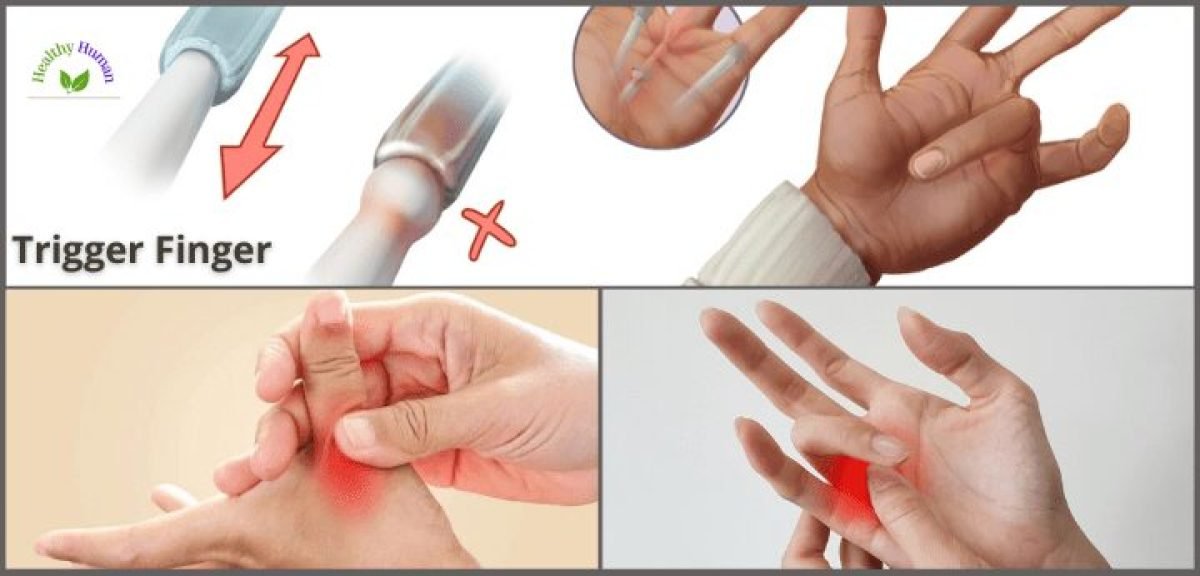Steps that you can take to deal with or cure your trigger finger. We will first understand what exactly the trigger finger is. Why is your finger gets stuck in a bent position? Moreover, what are the reasons, different treatments, and exercises to deal with it?
Trigger Finger
- A trigger finger is a condition where the involved finger will “catch” as it bends. The finger is straightening with a “pop” or a “snap”.
- The flexor tendon becomes thick and inflamed as it passes through the tendon pulley, resulting in a thickened nodule and tendon triggering. The tendon does not glide smoothly.
- Repetitive injuries or occupations are risk factors for trigger finger development.
- In the trigger finger, the pain will be at the level of the A1 pulley. There will catching, clicking, and triggering with finger flexion and extension.
Symptoms of Trigger Finger You Must Know
There will be pain before triggering. Pain is typically non-specific and poorly localized. The patient will complain of catching, then locking that has fixed (typical stages of trigger finger).
- When the tendon is unable to pass through the sheath, it might get locked. The tendon becomes tangled when it becomes inflamed.
- However the condition is progressive and it may lead to a fixed, flexed finger.
- It commonly affects the ring and long fingers.
- The trigger finger is an A1 pulley problem.
- The discomfort can found at the A1 pulley.
- 60% or more of patients with trigger fingers usually have associated carpal tunnel syndrome.
- Trigger finger occurs more in diabetics and more in females older than 50 years old.
- Diabetics may experience problems with both hands and many digits.
- Meanwhile, Nondiabetic patients have a better prognosis.
- Diabetes is a poor prognostic indicator for non-operative treatment and these patients are prone to develop stiffness or recurrence of the condition after surgical release.
In addition to diabetes, there are some other medical issues that can related with trigger fingers like:
- Gout
- Pseudogout
- Rheumatoid arthritis
- Sarcoidosis
- Hypothyroidism
Treatment Of Trigger Finger
Conservative treatment
The duration of triggering before going to the doctor is the most important prognostic predictor for a positive outcome with non-operative treatment.
An irreducible locked trigger finger with PIP joint flexion contracture should not be treated conservatively or even with injection (it will need surgery).
- Splinting.
- Nonsteroidal anti-inflammatory medications (NSAIDs).
- Rest.
- Activity modification.
At least, this can give some relief to the patient!
Injection
- Injection to the sheath, not into the tendon.
- 60-80% of nondiabetic patients may get better with injection. In diabetic patients, injection is ineffective.
- Also, try to obtain HbA1c (Hemoglobin A1c) in these patients before considering injection or any surgical intervention.
- The injection can be given three times.
- The majority of patients with trigger fingers get better with injection or surgery.
Surgery
- Done if the non-operative treatment fails.
- Involves release of the A1 pulley.
- There is a high recurrence in diabetic patients with surgery.
- The release of the A1 pulley can be percutaneous or open.
- Percutaneous release of the A1 pulley can be done for the fingers but not for the thumb because the radial digital nerve almost crosses in the middle of the surgical field (it can be injured).
- However, when releasing the A1 pulley, the release should be done at the level of the MP joint.
- The A2 and A4 pulleys are vital structures that should not be interfered with, removed, or released.
- Only the A1 pulley is cut and released, and the flexor tendon is released.
Surgical Release
How do you release the A1 pulley? The operation is performed under local anesthetic to allow for intra-operative examination and communication with the patient to ensure proper release.
Different Diagnosis of Trigger Finger
Lumbrical Plus Finger
When the patient tries to flex the fingers, the involved digit will be extended. Moreover, Paradoxical extension of the IP joint when attempting finger flexion.
Sagittal Band Injury
- Sagittal band injury can give you triggering. In sagittal band injury, the snapping occurs due to subluxation and relocation of the extensor tendon.
- You need to diagnose this condition of sagittal band injury in order to avoid unnecessary surgery for trigger finger release.
- The snapping and subluxation of the tendon are noticed at the top of the knuckle when moving from extension to flexion.
- The typical scenario is that the patient is unable to actively extend the finger from a fully flexed position, but the finger can be maintained in place once it is passively extended.
- However, In both conditions of trigger finger and sagittal band injury, usually, the long finger is affected.
Joint contracture
The patient could have a trauma history. The patient will be unable to actively or passively extend the finger.
Flexor Tenosynovitis
The four positive Kanavel signs:
- Fusiform swelling of the finger.
- Flexed posture of the finger.
- Tenderness along the sheath of the finger.
- Inability to actively extend the finger with intense pain when attempting to straighten the finger.
Flexor Digitorum Profundus Avulsion
However, the avulsed tendon ends can retract proximally and may become entrapped at the level of the PIP joint, causing flexion contracture of the PIP joint.
Posterior Interosseous Nerve Syndrome
With posterior interosseous nerve syndrome, there will be a lack of extension of the fingers and the finger may have a flexed posture.
Tenodesis is present with nerve injury, but not with tendon rupture.
How Exercise Can Help
Trigger finger inflammation can cause discomfort, soreness, and reduced motion.
Other signs and symptoms include:
Therefore, a hump or lump at the base of your affected thumb or finger a clicking, popping, or snapping sounds or sensation when you move your finger inability to straighten your finger after bending it.
Meanwhile, These symptoms can occur on both hands and on more than one finger at a time. Symptoms may be more prominent or evident first thing in the morning, when taking up an object, or when straightening your finger.
Targeted workouts and stretches might assist to relieve discomfort and promote flexibility. It is critical that you perform the exercises on a consistent basis in order to achieve the desired results.
How To Get Started With Exercises
These are easy workouts that you can do perform. All you’ll need is an elastic band and a variety of little objects. In addition, Coins, bottle tops, and pens are further examples of things.
Try to do these exercises for at least 10 to 15 minutes per day. As you build strength, you can increase the amount of time you spend completing the exercises. Increase the number of repetitions and sets as well.
It’s fine if you can’t finish the exercises’ full range of motion! However, After that, You should just do what you can. If your fingers become sore for whatever reason, it’s fine to stop doing the exercises for a few days or until you feel better.
Trigger Finger Exercises
Extensor Finger stretch
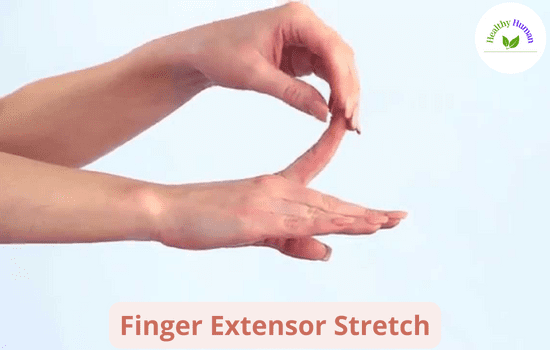
- Place your hand flat on a table or other sturdy surface.
- Hold the injured finger with your other hand.
- Lift the finger slowly while keeping the rest of your fingers flat.
- Stretch the finger as far as it will go without straining.
- Hold it here for a few seconds before releasing it.
- This stretch can be done on all of your fingers and your thumb.
- Perform one set of five repetitions.
- After the ward, Repeat three times more throughout the day.
Finger Abduction 1
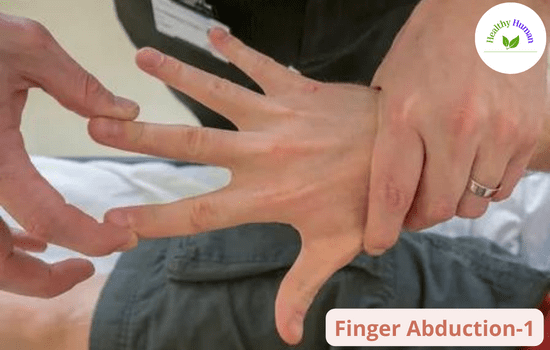
- Put your hand out in front of you.
- Extend your injured finger as well as the normal finger next to it.
- Gently press your extended fingers together with your thumb and index finger from the other hand.
- As you separate your two fingers, use your index and thumb to provide some resistance.
- Hold for a few seconds before returning to the starting position.
- Perform one set of five repetitions.
- Repeat three times more throughout the day.
Finger Abduction 2
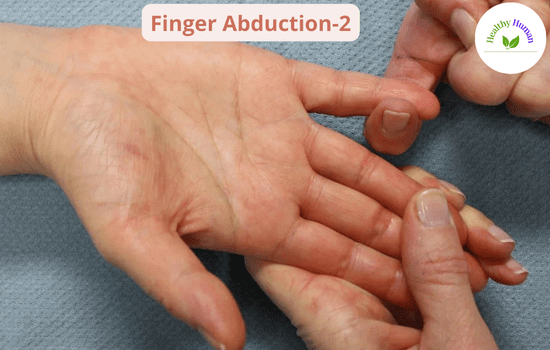
- Move your injured finger as far away from your normal finger as possible, forming a V shape.
- Use your opposite hand’s index finger and thumb to press these two fingers on the other fingers.
- Then, squeeze the two fingers together to bring them closer together.
- Perform one set of five repetitions.
- Repeat three times more throughout the day.
Spread Finger
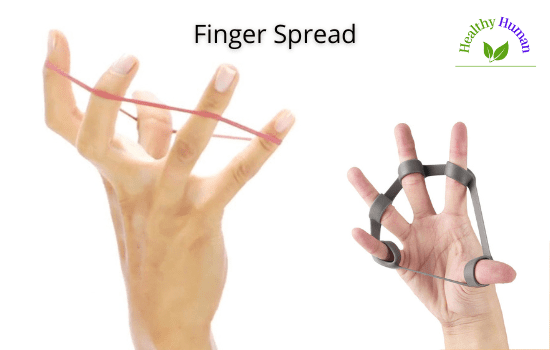
- Pinch the tips of your fingers and thumbs to the beginning.
- Wrap your fingers in an elastic band.
- Move your fingers away from your thumb to tighten the band.
- 10 times, extend your fingers and thumb away from and near to each other.
- While doing this, you should be able to feel the little stress of the elastic.
- Then, fold your fingers and thumb into your palm.
- In the middle, hook the elastic band.
- Therefore, Pull the end of the band with your opposite hand to produce slight tension.
- Maintain tension by straightening and bending your fingers ten times.
- Repeat at least three times during the day.
Palm Presses
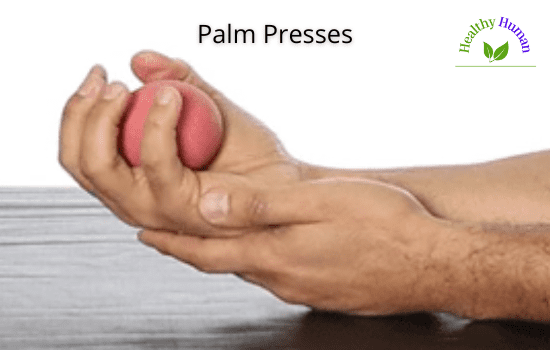
- Take a little item and place it in your hand.
- Therefore, Squeeze for many seconds.
- Then let go by spreading your fingers wide.
- Repeat several times.
- Repeat at least twice more during the day with different objects.
O Exercise
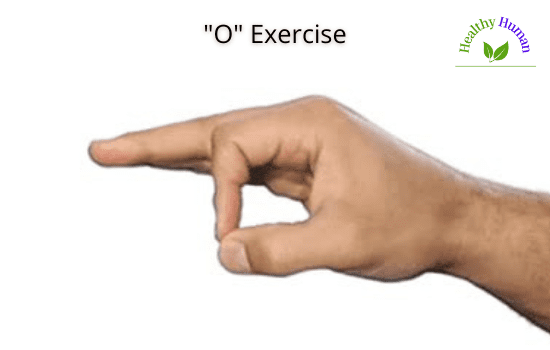
- Form an “O” shape with your affected finger and thumb.
- Hold this position for 5 seconds.
- Straighten your finger and return it to the “O” position. At least twice a day, repeat 10 times.
Also, Read

